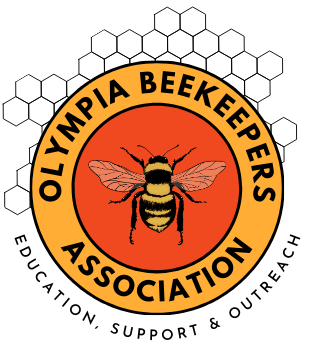July 28th 1pm to 7pm for entry. Drop off at the Fairgrounds. CLASS 7060: HONEY Entry criteria: Only 1 exhibit of the same product may be entered. A maximum of 10 entries may be entered per exhibitor. For each exhibit, submit 3 one pound Queenline honey jars. Judging criteria: Judging is based on appearance, moisture content, fill, (more…)
Lauri Miller Fortified Sugar Block Recipe 25# cane sugar one scant quart cider vinegar 1/2 tsp of electrolytes 1-2 Tbs citric acid (found in your canning dept) Splash of Pro Health or other scented essential oil of choice Mix together about 1/3 of the sugar and vinegar at a time in a five gallon bucket (more…)
Where? Traditions Cafe, 5th and Water St, downtown Olympia When? Monday Oct 24, 7 pm Pollinators play a significant role in successful crop production. Research suggests that native pollinators are responsible for a larger percentage of crop success than had long been supposed. Modern agricultural practices can disrupt native pollinator reproduction. Eli Bloom, a WSU (more…)
Just Announced by the Pierce County Beekeepers Association This is a special opportunity to learn specific tricks and techniques to get your bee colonies ready for winter. Fall Management Techniques With Dr. Dewey Caron Sponsored by the Pierce County Beekeepers Association September 17, 2016 9:00 AM – 5:00 PM Allmendinger Center, WSU Puyallup Campus, 2606 West (more…)
Installation of stand and hive boxes was completed today by the OBA’s Capitol Bee Team. The new buzzing residents at the Governor’s Mansion will officially arrive on April 20th. The OBA is thrilled to be collaborating with Governor and Mrs. Inslee and the Department of Enterprise Services at the Capitol on this project.
